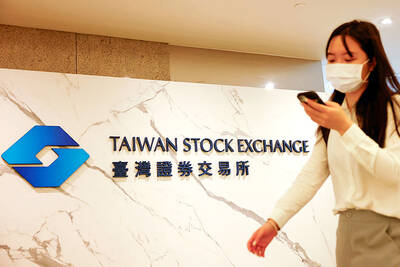Gold yesterday firmed up a foothold above US$1,500 an ounce as investors positioned for next year, with post-Christmas gains coming even as equities inched higher and US-China trade concerns eased.
Silver rose along with platinum and palladium in what has been a banner year for precious metals.
Bullion advanced for a fourth day, the best run since October, and headed for the highest close in more than seven weeks. The climb comes amid a focus on whether the US Federal Reserve’s interest rate-cutting pause would hold next year following three reductions this year.
“Without a dovish Fed pivot, it’s unlikely gold will make explosive gains, but it does appear the market is trying to carve out a new higher trading range,” AxiTrader chief Asia market strategist Stephen Innes said in a note.
That current trend “is a very favorable sign for gold bulls,” he said.
Gold is up 17 percent this year — set for the best showing since 2010 — as investors weighed the benefit of havens amid the to-and-fro of the US-China trade dispute and a run of central bank easing.
The latest tick higher came even as Asian stocks edged up, and US President Donald Trump on Tuesday said that a trade deal with Beijing is “done.”
“Caution needs to be exercised as the bullion markets could be extremely volatile, given the market’s low liquidity profile, especially to the downside as trade news remains positive and equity markets still scaling new heights,” Innes said.
Spot gold advanced as much as 0.4 percent to US$1,505.62 an ounce, the highest intraday price since Nov. 5, and was at US$1,503.79 at 7:08am in London, where many market participants remained on leave for Boxing Day.
Silver climbed as much as 1.4 percent to US$18.0220 an ounce.
Heading into the new year, there are mixed views on gold’s prospects.
Earlier this month, JPMorgan Chase & Co advised betting on gold to slide as the global economy gathers momentum. Among the bulls, Goldman Sachs Group Inc and UBS Group AG see prices climbing to US$1,600 an ounce.

ADVANCED: Previously, Taiwanese chip companies were restricted from building overseas fabs with technology less than two generations behind domestic factories Taiwan Semiconductor Manufacturing Co (TSMC, 台積電), a major chip supplier to Nvidia Corp, would no longer be restricted from investing in next-generation 2-nanometer chip production in the US, the Ministry of Economic Affairs said yesterday. However, the ministry added that the world’s biggest contract chipmaker would not be making any reckless decisions, given the weight of its up to US$30 billion investment. To safeguard Taiwan’s chip technology advantages, the government has barred local chipmakers from making chips using more advanced technologies at their overseas factories, in China particularly. Chipmakers were previously only allowed to produce chips using less advanced technologies, specifically

BRAVE NEW WORLD: Nvidia believes that AI would fuel a new industrial revolution and would ‘do whatever we can’ to guide US AI policy, CEO Jensen Huang said Nvidia Corp cofounder and chief executive officer Jensen Huang (黃仁勳) on Tuesday said he is ready to meet US president-elect Donald Trump and offer his help to the incoming administration. “I’d be delighted to go see him and congratulate him, and do whatever we can to make this administration succeed,” Huang said in an interview with Bloomberg Television, adding that he has not been invited to visit Trump’s home base at Mar-a-Lago in Florida yet. As head of the world’s most valuable chipmaker, Huang has an opportunity to help steer the administration’s artificial intelligence (AI) policy at a moment of rapid change.

The New Taiwan dollar is on the verge of overtaking the yuan as Asia’s best carry-trade target given its lower risk of interest-rate and currency volatility. A strategy of borrowing the New Taiwan dollar to invest in higher-yielding alternatives has generated the second-highest return over the past month among Asian currencies behind the yuan, based on the Sharpe ratio that measures risk-adjusted relative returns. The New Taiwan dollar may soon replace its Chinese peer as the region’s favored carry trade tool, analysts say, citing Beijing’s efforts to support the yuan that can create wild swings in borrowing costs. In contrast,

TARIFF SURGE: The strong performance could be attributed to the growing artificial intelligence device market and mass orders ahead of potential US tariffs, analysts said The combined revenue of companies listed on the Taiwan Stock Exchange and the Taipei Exchange for the whole of last year totaled NT$44.66 trillion (US$1.35 trillion), up 12.8 percent year-on-year and hit a record high, data compiled by investment consulting firm CMoney showed on Saturday. The result came after listed firms reported a 23.92 percent annual increase in combined revenue for last month at NT$4.1 trillion, the second-highest for the month of December on record, and posted a 15.63 percent rise in combined revenue for the December quarter at NT$12.25 billion, the highest quarterly figure ever, the data showed. Analysts attributed the